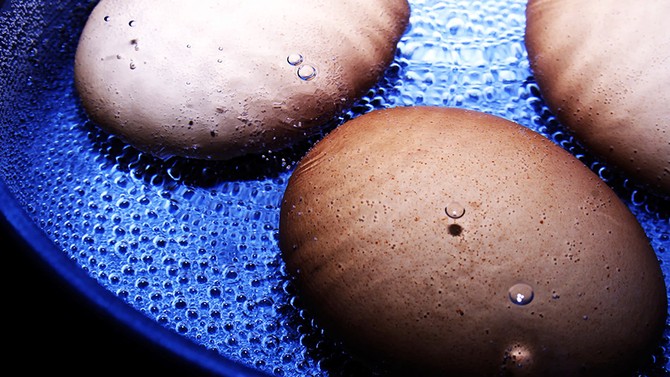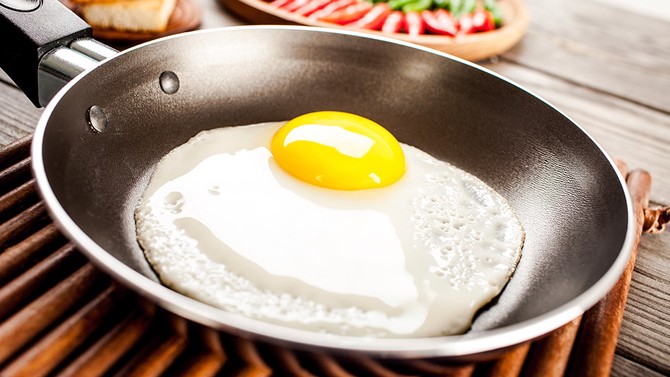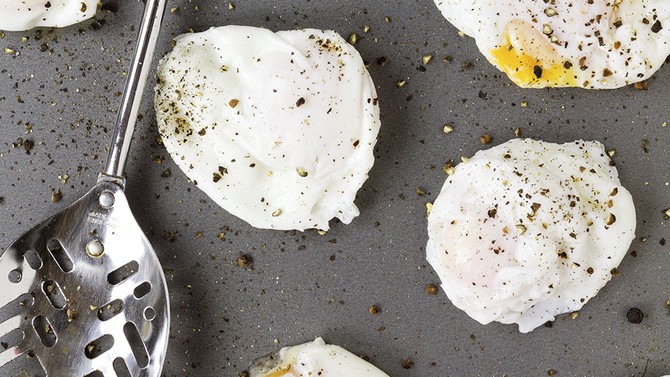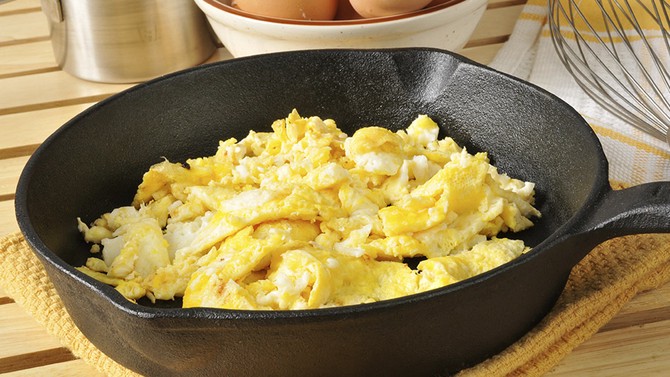4 Ways You're Making Eggs Wrong (and What to Do Instead)
Such a simple food; so many ways to mess it up. We learned a few rules for making delicious eggs from Michael Ruhlman, author of Egg: A Culinary Exploration of the World's Most Versatile Ingredient.
By Lynn Andriani

Photo: Brandy Sites/iStock/360/Thinkstock
You're Boiling Eggs and Eating Them Warm
Hard-cooking is probably the most basic way to prepare an egg, yet anyone who's laid eyes on a gray-green yolk and smelled that sulfurous odor knows basic does not mean foolproof. Ruhlman says the easiest and surest method is to put cold eggs in a pan, cover them with water by about an inch, put the pan over high heat and when the water comes to a full boil, put a lid on the pan, remove it from the heat and let it sit for 15 minutes. Now, here's the important part: Don't just drain the eggs and peel them. Instead, plunge the eggs into an ice bath for at least 10 minutes. Rapid cooling is key to preventing ferrous sulfide (and its accompanying weird colors) from forming.

Photo: Andrey Armyagov/iStock/360/Thinkstock
You're Using Your Gorgeous Stainless-Steel Pan to Fry Eggs
A high-quality stainless-steel fry pan might do a bang-up job with meats and vegetables, but if you try to fry eggs in it, you're probably going to end up scrambling them, even if you use butter or oil. Instead, nonstick pans (which do nothing to give meat and vegetables crisp and golden edges) are the best choice for frying eggs and keeping them intact, says Ruhlman. Use a good tablespoon of butter for two eggs to give the eggs the best flavor.

Photo: Gourmetphotography/iStock/360/Thinkstock
You're Doing That Vinegar Trick with Poached Eggs
If there's one lesson Ruhlman wants readers to come away with, it might just be this: Do not add vinegar to the poaching water to help prevent flyaway egg whites. Yes, countless people advise doing so, but Ruhlman promises it only results in your having to rinse off a sour egg before eating it. Rather, strain the raw egg in a slotted spoon before placing it in water. This will allow any loose white to drain off. Then add the egg to water that's simmering, gently lift out, drain on a paper towel and enjoy.

Photo: MSPhotographic/iStock/360/Thinkstock
You're Scrambling Eggs in 30 Seconds Flat
For scrambled eggs that are light and silky and never dry, repeat after Ruhlman: Use gentle heat. Setting your pan over a low flame is the single most important thing you can do to make unbelievable scrambled eggs, because it allows you to control the cooking, since it goes so slowly (actually, Ruhlman advocates using a double boiler over simmering water for the first few times, until you get the hang of cooking over superlow heat). Aside from that, your eggs should be totally blended (i.e., no visible whites or yolks) before cooking. Once they're in the pan, stir them gently and often in the first 30 seconds of cooking time; then, incrementally, so curds will form. Continue to fold and stir; the eggs are done when about two-thirds of the pan is stiff and a third is slightly runny (they'll continue to cook in the pan).
Published 06/19/2014

